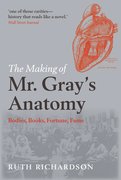 Kevin Brophy has written two books about creative writing, Creativity: Psychoanalysis, Surrealism and Creative Writing (1998) and this one, Explorations in Creative Writing. Both of these explore areas of creativity and writing that make them decidedly different from most other books on the subject: they are not how-to books, not strictly 'inspirational', nor are they strictly 'scholarly' approaches to literature. They are truly explorations of the vastness and intimacy of creative writing, with particular emphasis on the imagination and surrealism.
Kevin Brophy has written two books about creative writing, Creativity: Psychoanalysis, Surrealism and Creative Writing (1998) and this one, Explorations in Creative Writing. Both of these explore areas of creativity and writing that make them decidedly different from most other books on the subject: they are not how-to books, not strictly 'inspirational', nor are they strictly 'scholarly' approaches to literature. They are truly explorations of the vastness and intimacy of creative writing, with particular emphasis on the imagination and surrealism.Explorations is divided into three main sections: Reading Writing, Making Writing and Talking Writing. Brophy explores Kafka's 'Metamorphosis', the prose poem, gender issues, sentence-thinking, the novelisation of the poem. He gives us samples of his own short stories and poems, as well as those of others, including an excerpt of the strange but moving 'Sheep-Child' of James Dickey.
In my ignorance of this poet and this poem in particular, I sought out the complete verse, and listened to a recording of Dickey reading it. One wondrous thing that books can do is to lead you to other books and authors, and I was completely seduced by this poem I had never heard of before. Brophy introduces this piece in the context of metamorphosis and Kafka's famous story.
Brophy informs the reader in his introduction that this is a book about 'how writing gets done', and also how important reading is to a writer. He continues his references to the personal, with illustrative, and unsentimental, stories of his children and family life, particularly the birth of his first child, his daughter Sophie, in the first chapter. The openness and vulnerability of his writing here is appealing, and relevant to the process of writing in surprising ways. He writes that a 'parent is like an author whose characters have got riotously out of control - but in ways that can make the author see, briefly, what he or she is' (22).
Continued at the now-archived dotlit site.
